2-(2-Aminoethyl)-1-methylpyrrolidine
- CAS NO.:51387-90-7
- Empirical Formula: C7H16N2
- Molecular Weight: 128.22
- MDL number: MFCD00003175
- EINECS: 257-169-0
- SAFETY DATA SHEET (SDS)
- Update Date: 2024-04-09 22:15:29
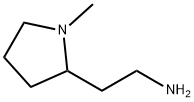
What is 2-(2-Aminoethyl)-1-methylpyrrolidine ?
Chemical properties
Clear colorless to pale yellow liquid
The Uses of 2-(2-Aminoethyl)-1-methylpyrrolidine
2-(2-Aminoethyl)-1-methylpyrrolidine is used as an electrochemiluminescence probe within microfluidic chip for ECL detection. 2-(2-Aminoethyl)-1-methylpyrrolidine is also used in chemical microarrays to identify ligands that bind pathogenic cells.
The Uses of 2-(2-Aminoethyl)-1-methylpyrrolidine
2-(2-Aminoethyl)-1-methylpyrrolidine was used in dual-cloud point extraction and tertiary amine labeling for the quantification of indole-3-acetic acid and indole-3-butyric acid.
What are the applications of Application
2-(2-Aminoethyl)-1-methylpyrrolidine is a compound used in dual-cloud point extraction and tertiary amine labeling
General Description
2-(2-Aminoethyl)-1-methylpyrrolidine labelling acts as probe within microfluidic chip for electrochemiluminescence detection. It acts as electrogenerated chemiluminescence derivatization reagent for carboxylic acid in HPLC.
Properties of 2-(2-Aminoethyl)-1-methylpyrrolidine
| Boiling point: | 152.7±8.0 °C(Predicted) |
| Density | 0.885 g/mL at 25 °C (lit.) |
| refractive index | n |
| Flash point: | 149 °F |
| storage temp. | Keep in dark place,Inert atmosphere,Room temperature |
| solubility | Chloroform (Slightly), Methanol (Slightly) |
| form | Powder |
| pka | 10.34±0.40(Predicted) |
| color | Light beige to light brown |
| CAS DataBase Reference | 51387-90-7(CAS DataBase Reference) |
Safety information for 2-(2-Aminoethyl)-1-methylpyrrolidine
| Signal word | Danger |
| Pictogram(s) |
 Corrosion Corrosives GHS05  Exclamation Mark Irritant GHS07 |
| GHS Hazard Statements |
H302:Acute toxicity,oral H315:Skin corrosion/irritation H318:Serious eye damage/eye irritation H335:Specific target organ toxicity, single exposure;Respiratory tract irritation |
| Precautionary Statement Codes |
P261:Avoid breathing dust/fume/gas/mist/vapours/spray. P264:Wash hands thoroughly after handling. P264:Wash skin thouroughly after handling. P280:Wear protective gloves/protective clothing/eye protection/face protection. P301+P312:IF SWALLOWED: call a POISON CENTER or doctor/physician IF you feel unwell. P302+P352:IF ON SKIN: wash with plenty of soap and water. P305+P351+P338:IF IN EYES: Rinse cautiously with water for several minutes. Remove contact lenses, if present and easy to do. Continuerinsing. |
Computed Descriptors for 2-(2-Aminoethyl)-1-methylpyrrolidine
2-(2-Aminoethyl)-1-methylpyrrolidine manufacturer
Rivashaa Agrotech Biopharma Pvt. Ltd.
New Products
(S)-3-Aminobutanenitrile hydrochloride 4-Methylphenylacetic acid N-Boc-D-alaninol N-BOC-D/L-ALANINOL Tert-butyl bis(2-chloroethyl)carbamate 3-Morpholino-1-(4-nitrophenyl)-5,6-dihydropyridin- 2(1H)-one Furan-2,5-Dicarboxylic Acid Tropic acid 1-Bromo-3,5-Di-Tert-Butylbenzene S-2-CHLORO PROPIONIC ACID ETHYL ISOCYANOACETATE 2-Bromo-1,3-Bis(Dimethylamino)Trimethinium Hexafluorophosphate 4-IODO BENZOIC ACID 3-NITRO-2-METHYL ANILINE 1-(2,4-DICHLOROPHENYL) ETHANAMINE (2-Hydroxyphenyl)acetonitrile 4-Bromopyrazole 2-(Cyanocyclohexyl)acetic acid 4-methoxy-3,5-dinitropyridine 1-(4-(aminomethyl)benzyl)urea hydrochloride 2-aminopropyl benzoate hydrochloride diethyl 2-(2-((tertbutoxycarbonyl)amino) ethyl)malonate tert-butyl 4- (ureidomethyl)benzylcarbamate Ethyl-2-chloro((4-methoxyphenyl)hydrazono)acetateRelated products of tetrahydrofuran



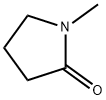

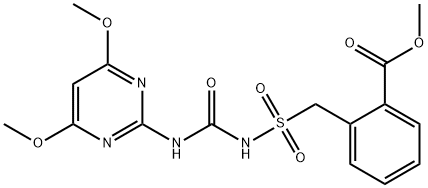
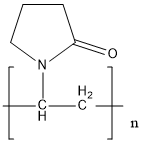
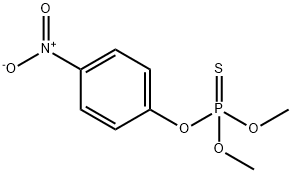
You may like
-
 51387-90-7 2-(2-aminoethyl) -1- methyl pyrrolidine 98%View Details
51387-90-7 2-(2-aminoethyl) -1- methyl pyrrolidine 98%View Details
51387-90-7 -
 51387-90-7 99%View Details
51387-90-7 99%View Details
51387-90-7 -
 2-(2-Aminoethyl)-1-methylpyrrolidine CAS 51387-90-7View Details
2-(2-Aminoethyl)-1-methylpyrrolidine CAS 51387-90-7View Details
51387-90-7 -
 2-(2-Aminoethyl)-1-methylpyrrolidine CAS 51387-90-7View Details
2-(2-Aminoethyl)-1-methylpyrrolidine CAS 51387-90-7View Details
51387-90-7 -
 2-(2-Aminoethyl)-1-methylpyrrolidine CAS 51387-90-7View Details
2-(2-Aminoethyl)-1-methylpyrrolidine CAS 51387-90-7View Details
51387-90-7 -
 1975-50-4 98%View Details
1975-50-4 98%View Details
1975-50-4 -
 14714-50-2 (2-Hydroxyphenyl)acetonitrile 98+View Details
14714-50-2 (2-Hydroxyphenyl)acetonitrile 98+View Details
14714-50-2 -
 118753-70-1 98+View Details
118753-70-1 98+View Details
118753-70-1